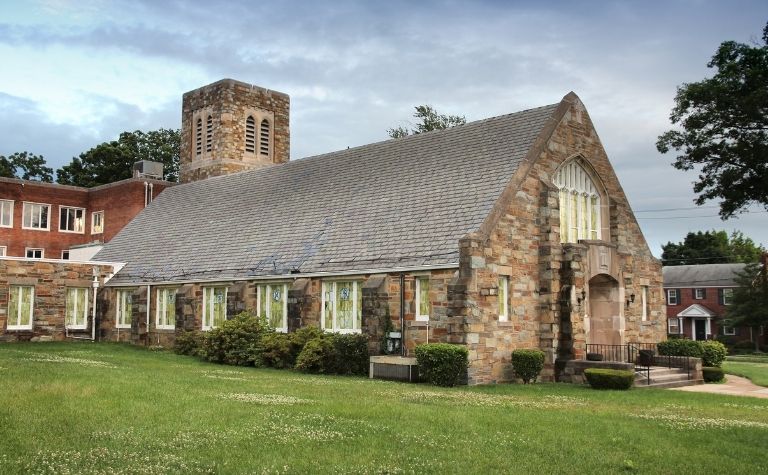The Presbyterian and Baptist traditions are influential Protestant denominations that have left their mark in Europe, America, and worldwide. The traditions agree on many important matters of faith and practice, but they have significant differences, too.
Presbyterians and Baptists agree on doctrines like the Trinity, Scripture’s inspiration, and Jesus Christ’s resurrection. They disagree about baptism, the nature of the bread and cup at the Lord’s Supper, and church government. Presbyterians are Calvinists. Some Baptists are Calvinists; some aren’t.
Why do Presbyterians and Baptists believe the way they do? What are the largest Presbyterian and Baptist denominations? The comparison charts below offer readers valuable information to understand these important Christian denominations better. Keep reading to learn more.
Also, see Presbyterian vs. Pentecostal: What’s the Difference? to learn more.

Presbyterian and Baptist Comparison: Overview
Unless otherwise noted, the chart below reflects the historical convictions of the Presbyterian and Baptist traditions.
In the second half of the 20th century, some denominations and churches in each tradition began questioning and abandoning the historical teachings of their movement.
As a result, some “Presbyterian” and “Baptist” churches no longer believe or teach the doctrines and practices that have defined their traditions for centuries.
| Presbyterian | Baptist | |
|---|---|---|
| Name | The term “Presbyterian” is derived from the Greek word presbyteros, meaning “elder.” In the New Testament context, the word refers to a form of church government that is elder-led. | The word “Baptist” comes from the practice of “believer’s baptism,” i.e., only professing Christians are baptized, not infants. |
| Origin | John Calvin (1509-1564), 16th century France | The Baptist tradition has roots in English Puritanism and the Anabaptist tradition in Europe. |
| Early influencer(s) | John Knox (1514-1572), 16th century Scotland | John Smyth (1554-1612) in England, Roger Williams in America (1603-1683) |
| Significant writing outside the Bible | The Westminster Confession of Faith (1647) | The London Confession of Faith (1689), the New Hampshire State Baptist Convention (1832) |
| What are the largest denominations in the tradition today? | The Presbyterian Church USA (PCUSA); the Presbyterian Church of America (PCA)* see charts below | Southern Baptist Convention (SBC); National Baptist Convention, USA, Inc. (NBCUSA)* see charts below |
| Primary doctrine | The Trinity, the fallenness of humanity, the death of Christ as an atonement for sin, the physical resurrection of Christ, salvation is by grace through faith, the inspiration and authority of Scripture, the Second Coming | same |
| Theology | Presbyterian churches are Reformed; historically, the teachings of John Calvin shape the tradition’s doctrine; Covenant Theology undergirds their faith and practice. | The Baptist tradition is one of the most doctrinally diverse denominations in Protestantism (e.g., Baptists may be Calvinist or Arminian); Baptists generally agree on Believer’s Baptism, the autonomy of the local church, and the separation of church and state. |
| Theological and Social worldview | It depends on the denomination; the PCUSA welcomes liberal and progressive theological positions and social causes; the PCA maintains conservative positions on theological and social matters. | It depends on the denomination; the Southern Baptist Convention is theologically and socially conservative; others, like American Baptists Churches (USA), welcome liberal and progressive ideas and practices. |
*The PCUSA, the largest Presbyterian denomination, is more liberal than the second largest, the PCU. The SBC, the largest Baptist denomination (and the largest Protestant denomination in America), is more conservative than the NBCUSA.
Social issues that divide denominations and churches include but aren’t limited to ordaining women, same-sex marriage, ordaining gay and lesbian ministers, Black Lives Matter, Critical Race Theory, and much more.

What Are the Theological Differences Between Presbyterians and Baptists?
Please see “Primary Doctrine” and “Theology” in the table above as a starting point to understand the theological similarities and differences in the Presbyterian and Baptist traditions. (Also, see Presbyterian vs. Reformed: What’s the Difference?)
The table below reflects the historical convictions of each tradition. Conservative denominations and churches maintain strong convictions about these doctrines, while liberal and progressive bodies within the traditions hold them loosely or have replaced them with modern convictions.
| Presbyterian tradition | Baptist Tradition | |
|---|---|---|
| Scripture | Presbyterians believe in the inspiration and authority of Scripture. Many conservatives accept and defend the terms “inerrancy” (i.e., Scripture has no errors) and “infallibility” (i.e., Scripture can’t lead astray in belief or practice). Moderate-liberal churches read and teach Scripture selectively. | same |
| God | Presbyterians believe in the Trinity; there is one God who exists in three persons. The Father, Son, and Holy Spirit are each fully divine. | same |
| Christ | Jesus is the second person of the Trinity. He is God in human flesh. He is 100% God and 100% man. Jesus was born of a virgin, lived a sinless life, died as an atonement for sin, and was physically resurrection on the third day. | same |
| Holy Spirit | The Holy Spirit is the third person of the Trinity. He is fully divine. The Spirit applies the salvation that the Father planned and that the Son earned for sinners. He bestows spiritual gifts on believers that they are to use for the edification of the Church. | same |
| Salvation | Presbyterians are Calvinists and have robust doctrines on election and predestination. | Baptists can be Calvinists, Arminians, or something else. |
| Sacraments/ Ordinances | There are two: baptism and the Lord’s Supper or communion; Presbyterians describe baptism as a sign and seal of the covenant of grace made by God through Jesus and extended to us. | There are two: Believer’s Baptism (but not infant baptism) and the Lord’s Supper; Baptists don’t believe sacraments are channels of grace. |
| Baptism | Presbyterians practice “paedobaptism” (paedo = “child”), also known as infant baptism by means of sprinkling. Baptism signifies inclusion into the Covenant community. Adults can be baptized if they never were as a child. | Sometimes referred to as “credobaptism” (credo = “I believe”), the sacrament is for professing believers who have trusted Christ for salvation. |
| The Lord’s Supper | Presbyterians believe Christ is spiritually present in the bread and cup. The elements aren’t merely symbols or reminders. They reject the teaching of the Catholic Church on transubstantiation. | Also called “communion,” most Baptists believe consuming the bread and cup is a memorial of the atonement of Christ. They reject the teaching of the Catholic Church on transubstantiation. |
| Church organization | Calvin taught that there are elders who preach and teach and other elders who help rule over the church. Elders in a local church comprise a session. Elders in the same geographical location form a presbytery. Groups of presbyteries form a synod. | The autonomy of the local church is an important Baptist doctrine. Local churches often belong to denominations, associations, or networks, but their relationship is cooperative. |
| View of the end times | Amillennial; Presbyterians believe the 1,000-year period described in Revelation 20:1-6 occurs between Christ’s first and second coming. | Baptists may be Amillennial. Some are premillennial, so they believe the 1,000-year period is literal and will occur after the Rapture, seven-year tribulation, and the return of Christ. |
Also, see Presbyterian vs. Pentecostal: What’s the Difference?

Presbyterian and Baptist Denominations
The Presbyterian Church (USA) has experienced attendance declines in recent decades, but it’s still the largest Presbyterian denomination in America by a significant amount.
The Presbyterian Church in America has seen slight increases in recent years due in part to conservatives leaving the Presbyterian Church (USA). (Also see Presbyterian Church USA vs. Presbyterian Church in America: What’s the Difference?)
| Presbyterian Denominations | Membership |
|---|---|
| Presbyterian Church (USA) | 1.7 million |
| Presbyterian Church in America | 370,000 |
| Evangelical Presbyterian Church | 150,000 |
The Southern Baptist Convention is the largest Protestant denomination in America. It’s over twice the size of the second-largest, the United Method Church.
The division between the Southern Baptist and Northern Baptist denominations is rooted in conflict at the time of the Civil War. In recent years, the Convention has confessed and sought forgiveness for unbiblical beliefs and practices concerning African-Americans. [3]
| Baptist Denominations | Membership |
|---|---|
| Southern Baptist Convention | 16 million |
| National Baptist Convention, USA, Inc. | 5 million |
| National Missionary Baptist Convention of America | 2.5 million |
| Baptist General Conference of Texas | 2.4 million |
| American Baptist Churches in the USA | 1.2 million |
| Cooperative Baptist Fellowship | 1 million |
| Progressive National Baptist Convention, Inc. | 1 million |
Also, see Presbyterian vs. Puritan: What’s the Difference?
Please see the related articles below.
References:
[1] Source
[2] Source
[3] Source
Related Questions
The Presbyterian and Episcopalian traditions are Protestant branches of the Christian faith that originated in 16th-century Europe. These denominations have much in common, especially when contrasted...
The Roman Catholic and Presbyterian branches of the Christian faith trace their origins to Jesus of Nazareth and his apostles, as well as their writings that comprise most of the New Testament. There...
